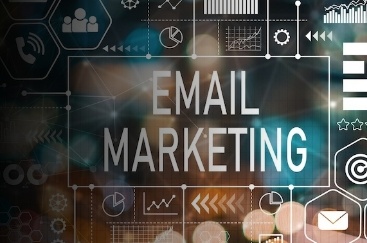10 Best Practices for Effective Email Marketing Using HubSpot
Despite all of today’s marketing channels, email marketing remains a powerful tool for engaging customers, nurturing leads, and driving conversions. In fact, According to a study by Campaign Monitor, email marketing has an average ROI of 4200%. This means that for every $1 you spend on email marketing, you can expect to see a return of $42 in revenue.
However, achieving success in email marketing requires the right platform and strategy. HubSpot, a renowned inbound marketing and sales software, has emerged as a game-changer in the world of email marketing. In this article, we’ll provide an overview of HubSpot for email marketing, explore its pros and cons, discuss best practices, and show you how to track the success of your email campaigns.
Overview of HubSpot for Email Marketing
HubSpot is more than just a CRM platform; it’s a comprehensive marketing automation tool that simplifies various aspects of marketing, including email campaigns. With HubSpot, you can seamlessly manage your email marketing efforts from start to finish.
One of the standout features of HubSpot is its user-friendly interface. It offers an intuitive drag-and-drop email builder, making it easy for marketers to create eye-catching emails without any coding skills. Additionally, HubSpot provides customizable templates, allowing you to choose from a variety of professionally designed templates or create your own, ensuring your emails align with your brand’s identity.
Pros of Using HubSpot for Email Marketing
When it comes to email marketing, HubSpot offers several advantages that can significantly impact your campaign’s success. First and foremost, HubSpot’s automation capabilities empower you to send the right message to the right audience at the right time. This automation feature is a time-saver and ensures consistent communication with your audience.
Another significant advantage is HubSpot’s A/B testing capabilities. These tools allow you to conduct A/B tests to determine which email variations resonate most with your audience. By analyzing the results, you can refine your email content for better engagement.
HubSpot also provides detailed analytics and reporting tools that offer insights into key performance metrics like open rates, click-through rates, conversion rates, and other relevant indicators. These insights enable data-driven decision-making and continuous improvement. Moreover, HubSpot seamlessly integrates with its CRM, facilitating a unified customer journey. This integration enables you to segment your email list based on CRM data, ensuring personalized and relevant email content.
Cons of Using HubSpot for Email Marketing
While HubSpot offers numerous benefits, it’s essential to be aware of its potential drawbacks. One consideration is the cost. HubSpot’s robust features come at a price, which may make it less budget-friendly for small businesses. However, for many organizations, the return on investment (ROI) can justify the expense.
To better estimate the potential total cost of ownership, we have created a very useful HubSpot TCO calculator. It’s important to understand TCO because it can show that software can cost an organization 5-8 times the original purchase price.

Another drawback is the learning curve. HubSpot’s extensive feature set can be overwhelming for beginners. It can take time and effort to fully grasp the features and use them effectively. In some cases, advanced marketers may find HubSpot’s automation workflows a little less flexible compared to specialized email marketing platforms. To keep your email marketing campaigns working optimally, you need to regularly update and refine your strategies, which can be very time-consuming. That being said, the learning curve is relatively low and easy to learn, so don’t let that stop you from using HubSpot.
Best Practices for Effective Email Marketing with HubSpot
To make the most of HubSpot’s email marketing capabilities, follow these best practices. First, segment your email list. Divide your email list into segments based on user behavior, demographics, or preferences. This allows you to send highly targeted and relevant content.
Next, focus on crafting compelling subject lines and content. Your email’s subject line is the first thing recipients see. Make it attention-grabbing, and ensure your email content is valuable and engaging. HubSpot recently added a feature that allows anyone to create email subject lines using AI. This saves time and allows for greater creativity.
Additionally, utilize automation workflows. Set up automated workflows to nurture leads, send welcome series, and re-engage inactive subscribers. Automation saves time and increases efficiency.
Don’t forget to conduct A/B tests regularly. Experiment with different elements of your emails, such as subject lines, content, and visuals. Analyze the results to refine your email marketing strategy. Lastly, ensure your email marketing complies with regulations like GDPR and CAN-SPAM to avoid legal issues and maintain trust with your audience.

Tracking Success in HubSpot Email Marketing
Tracking the success of your email marketing campaigns in HubSpot is crucial to optimize your strategies. Here’s how you can do it. First, monitor key performance indicators (KPIs). Keep a close eye on metrics like open rates, click-through rates, conversion rates, and other relevant indicators. Compare these metrics with your campaign goals and benchmarks to assess its effectiveness. It’s important to note that open rates aren’t as accurate as they once were. This is mostly due to Apple’s privacy changes. HubSpot also provides recommendations on the best time to send emails, in order for them to be the most effective.
Leverage HubSpot’s built-in analytics and reporting tools. HubSpot provides a range of tools that make it easy to track and measure your email marketing performance. Utilize these insights to make data-driven decisions.

Lastly, focus on continuous improvement. Regularly analyze your email marketing data and identify areas for improvement. Make adjustments to your campaigns based on what the data tells you.
10 Email Marketing Best Practices for 2023
- Segment Your Email List: Segmenting your email list involves categorizing subscribers based on their behavior, demographics, or preferences. By sending targeted content to specific segments, you can increase relevance and engagement, leading to higher open and click-through rates.
- Personalize Your Emails: Personalization goes beyond addressing subscribers by their first name. Use dynamic content to tailor the email’s message, product recommendations, or offers to each recipient’s preferences and past interactions with your brand.
- Optimize for Mobile Devices: With a significant portion of emails being opened on mobile devices, ensure that your emails are mobile-responsive. Use a responsive email template and test how your emails appear on various devices and email clients.
- Craft Compelling Subject Lines: The subject line is your email’s first impression. Create concise, attention-grabbing subject lines that convey the email’s value or intrigue recipients, encouraging them to open and read your message.
- Provide Valuable Content: Content is king. Deliver valuable, relevant, and informative content in your emails. Solve problems, answer questions, and offer solutions that resonate with your audience’s needs and interests.
- Use a Clear Call-to-Actions (CTA): Ensure that your email has clear and actionable CTA that guide recipients on what to do next. Whether it’s making a purchase, signing up, or downloading content, the CTA should be prominent and compelling.
- Test and Refine Regularly: A/B testing is your ally. Experiment with different elements of your emails, such as subject lines, images, CTA buttons, and content. Analyze the results to refine your email marketing strategy continually.
- Comply with Regulations: Maintain legal and ethical email marketing practices by complying with regulations like GDPR and CAN-SPAM. Provide clear opt-in and opt-out options, and respect subscribers’ privacy preferences.
- Send Emails at the Right Time: Timing matters in email marketing. Analyze your audience’s behavior to determine the best days and times to send emails. Consider time zones and the specific preferences of your subscribers.
- Monitor and Analyze Metrics: Regularly monitor email marketing metrics, including open rates, click-through rates, conversion rates, and unsubscribe rates. Use these insights to evaluate your campaign’s success and make data-driven improvements.
These ten best practices can help you enhance the effectiveness of your email marketing campaigns, build stronger relationships with your audience, and drive better results.
Conclusion
HubSpot is a powerful tool for email marketing, offering a wide range of features and capabilities to enhance your campaigns. While it’s not without its challenges, the benefits of using HubSpot for email marketing, such as automation, personalization, and detailed analytics, make it a valuable asset for marketers. By following best practices and tracking your campaign’s success, you can leverage HubSpot to create effective email marketing campaigns that drive results.
In summary:
HubSpot simplifies email marketing with automation, personalization, and analytics.
Pros include automation features, A/B testing, detailed analytics, CRM integration, and personalization options. Cons may include cost, a learning curve, limited flexibility, and ongoing maintenance. Best practices include segmenting your list, crafting compelling content, utilizing automation, conducting A/B tests, and complying with regulations.
Regularly monitor KPIs, use HubSpot’s analytics, and focus on continuous improvement to track your email marketing success.
With HubSpot at your disposal and a strategic approach, you can harness the full potential of email marketing to engage your audience and drive business growth.



